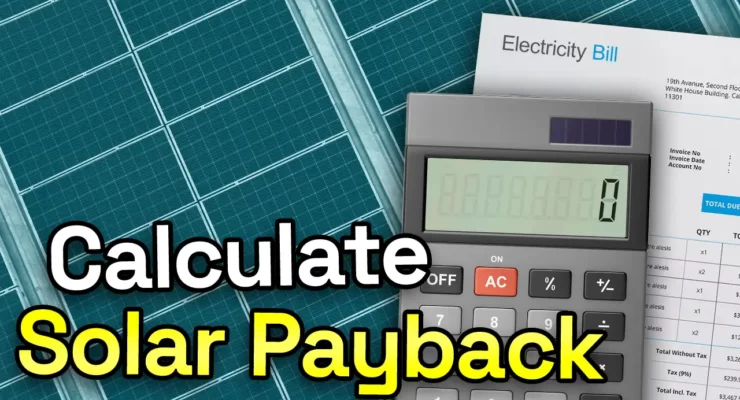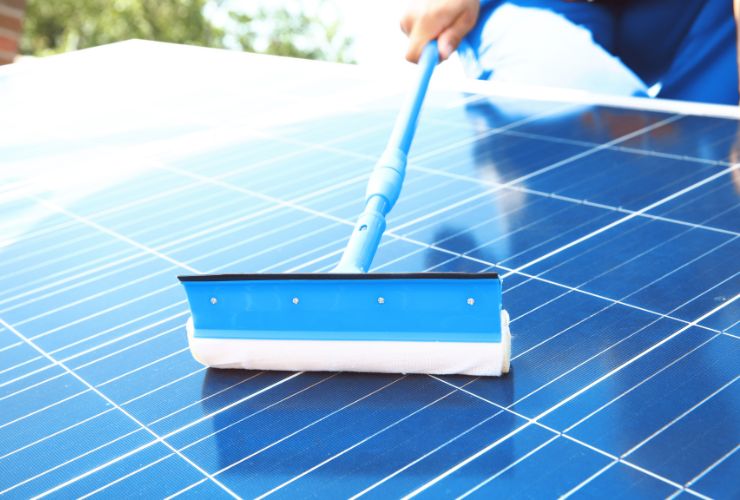
Fast read
The payback period is the time it takes for the initial investment to be recovered through energy savings and other benefits.
For a solar system without a battery, you gather information about your electricity usage and costs, calculate the annual energy savings based on system output and electricity rates, and subtract maintenance costs to find the true savings.
The provided information emphasises that these calculations make certain assumptions and recommends consulting with qualified suppliers or installers for accurate advice. It concludes that a solar and battery system can provide financial benefits over time.
How do I calculate the payback period on my solar and my solar & battery systems?
Solar batteries are becoming increasingly popular, combined with solar panels as a package rather than solar by itself. This change affects how the integrated solar solution manages the generated electricity and how we calculate the payback period for a solar and battery system.
The solar payback period refers to the time it takes for the initial investment to pay for itself. In regards to a solar system, the money you save through energy savings and other benefits will eventually cover the cost of the system.
However, how do you determine how long this will take? This article will give you a step-by-step guide to calculating your solar payback period. We have a great calculator on this issue, which you can find here.
The solar payback period without a battery
First, you must gather information on your electricity usage and costs. Grab your electricity bills and look at how much electricity you use daily (The average household across Australia uses 18-20kwh per day). If you have a smart meter or digital meter, your installer can get detailed usage data in 30-minute intervals, allowing you to see precisely when and how much you are using electricity during the day.
From the energy bill or your energy retailer’s price list, you can also determine your local consumption tariffs. The tariffs show how much you are being charged per kWh of electricity you buy from the grid. You might have a flat rate, meaning all kWhs consumed cost the same no matter what time of the day, or you have a time of use tariff, meaning depending on what time it is, you might be charged different tariffs.
So the critical bits of information you want to work out the ROI are:
- FIT price per kWh (what you get paid for solar electricity exported)
- Cost of the solar power system with battery option (Solar and battery cost)
- Expected annual solar generation in your postcode for the proposed size solar panel system. Use our output calculator to get this number

Step 1- The initial cost of the system
Start by finding the total initial cost of your solar system. This total includes the panels, installation and inverter, and any additional equipment you have, such as a battery.
The initial cost will depend on the system’s size, the equipment quality and your installer’s experience. Look at your installer’s quote or the invoice in case you purchased the system already. Write this number down – in our example, it is $8,085 for a 6.6 kW system.
Step 2- Annual energy savings
The next step is to find your solar payback period is the annual energy savings your system will provide. Like the cost, this will vary between systems because of size and quality. Your savings can be found by multiplying the energy the system produces, which you will get via our output calculator. This calculator gives you an estimated solar generation in kW/h for any postcode and any system size in Australia.
Then estimate how much of this generation you will use in the house and how much you will export. A 50/50 assumption is often quite accurate. For the cost of electricity, you can find the price per kW/h on the back of your latest electricity bill.
For example, if your 6.6 kW system in Brisbane produces 10,780 kW/h of solar energy annually the cost of electricity is $0.40 per kWh, and your export payment (FiT) per kW/h is 10 cents, then your income per annum is – as long as you use 50% and export 50% as per below:
50% of 10,780 kWh = 5,390 kWh x 0.40 cents = $2,156 plus the savings via the export income (FiT)
50% of 10,780 kW/h = 5,390 kWh x 10 cents = $ 539 FiT income.
So, the total benefit from that solar system per year is $2,156 (the amount saved on electricity not purchased from the grid) plus $539 (income from exporting electricity), resulting in $2,695.
If this solar PV system originally cost $8,085, then that figure divided by the annual income of $2,695 gives you the result, being a 3-year ROI.
Step 3 – Annual maintenance costs
The third step to finding your solar payback period is to calculate what your annual maintenance costs will be. These costs will include cleaning and general routine maintenance. As the system is new, these costs will be relatively minor in the 1st years – so they will have minimal effect on the ROI calculations.
If you seek to calculate the maintenance costs for solar in future years, first check your system’s warranty and what it covers. For example, your workmanship warranty may cover the 1st general maintenance visit in year three, so the cost impact on the ROI will be zero.
When you have your final maintenance and future part replacement numbers, subtract these from your annual energy savings. This will give you your actual savings for 1 or 2 decades.

Step 4 – How to calculate the solar payback period with a solar & storage battery system
Suppose you have a solar storage battery with your solar system. Finding the solar payback period changes and gets a little more complicated. Without many measurements and data, we need to make rough assumptions to get general numbers.
The figure you will need to find is the battery’s usable capacity. Let’s say we purchased a 15.5 kWh battery and can use it safely, meaning draw out to 90%. This means we can extract from fully charged to empty 14 kWh – being 90% of a 15.4 kWh battery.
If we export 15 kWh of electricity per day on average, then in our calculations, let’s assume that we absorb via the battery the complete 15 kWh each day and use the full 15 kWh during the night and cloudy days.
So the battery makes us on the 15 kWh stored and used daily 15 x 30 cents = $4,50 per day. If this benefit would be constant for the year, then the annual battery benefit would be 365 x $4.50 = $1642.50
Step 5 – The solar payback period with battery calculated
To find your final solar payback period, add your battery cost of, let us say, $13,500 to your solar system price of $8,085 = $21,585. Now add the annual savings from both the solar and the battery together being $2,695 plus $1642.50 together = $4,337.50, yearly benefit.
Now add the total solar system costs and the battery purchase cost together, being $8,095 plus $13,500 = $21,595. Divide the total system cost by annual savings to find the solar payback period.
So it’s $21,595 divided by $4,337.50 = 4.97 years. Therefore the ROI on a solar and battery in this example is close to 5 years, compared to 3 years for solar only.
Therefore, a solar-only system looks financially more advantageous than a solar/battery combo.
But batteries will soon be a must-have when we move into the world of EVs. Then there are the benefits of using all the solar power with the help of the battery and having a backup for grid outages.
Then in the future when you purchase an EV, your solar and battery can make sure you literally can drive with the power of your own home power station which will give you further savings, as now your $2500 annual petrol bill will be much much lower.
If we assume the battery lasts 12 years on a rough calculation after 12 years, not only did we pay for the solar and battery, but we also saved after we paid the system off after 5 years – another 7 years, the annual benefit of $ 4,337.50.
The result
So 7 x $4,337.50 = $30,362.50 overall benefit over the life of the battery, plus many more additional years of solar benefits to add on top.


